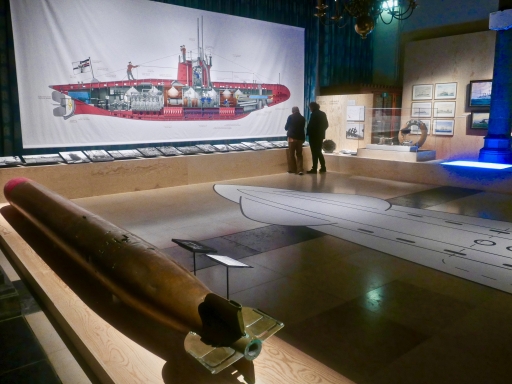We review a new exhibition in Bruges, displaying all 11 Victoria Crosses awarded for the Zeebrugge and Ostend raids – and highlighting the struggle between Britain’s Royal Navy and German submarines for control of the North Sea in 1914-18. CN Editor Peter Alhadeff was at the opening in the Provinciaal Hof, once headquarters for the Flanders U-boat campaign.
The formal launch, on April 20, was timed to coincide with events marking the centenary of the Zeebrugge Raid. This was the Royal Navy’s bold, but ultimately unsuccessful, operation to seal off the Belgian coast to U-boats in 1918 while the Allied armies were battling to contain Germany’s spring offensive.
Submarines sailing from the occupied harbours of Bruges, Zeebrugge and Ostend menaced the shipping on which the British war effort depended. As Winston Churchill noted: “The only thing that ever really frightened me during the war was the U-boat peril.”
1914 ’18 The Battle for the North Sea, sets its sights on raising awareness of this critical campaign, and in a notable ‘first’, has brought together all the Victoria Crosses awarded for the attacks on Zeebrugge and Ostend a century ago.
But it goes much further, also telling the German side of the story from the earliest months of the First World War when the opportunity was grasped to base a submarine fleet within easy raiding distance of the Channel ports and British waters.
Marine archaeologist Tomas Termote has assembled an impressive array of artefacts and documents, not to mention a mass of archive photographs revealing the human face of the conflict.
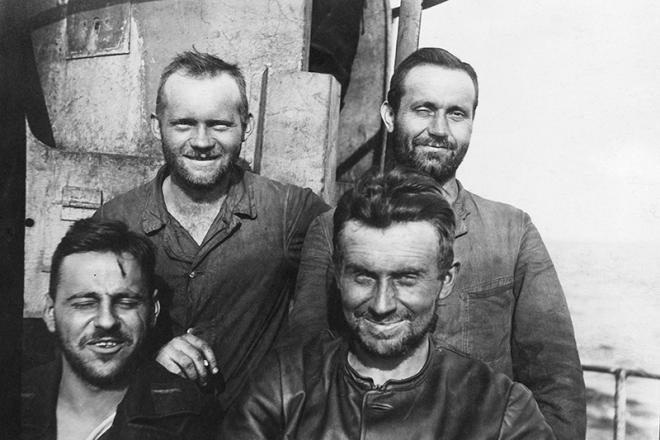
U-boat engineers, their eyes squinting in the daylight, pose for the camera after coming up on deck for fresh air (Photo © Tomas Termote)
Working out of Ostend, Termote is still making discoveries. A dive beneath one of the busiest shipping lanes of the North Sea in the summer of 2017 revealed the near intact wreck of a German submarine, UB-29. A loose deck gun found close to the site – now a protected war grave – is among the exhibits, a reminder that marine archaeology has added to understanding of the First World War throughout the 2014-18 Centenary.
Support for the exhibition has come from leading museums in Belgium, Britain and Germany – including the Imperial War Museum, U-boat Archive Cuxhaven, Maritime Museum Hamburg and War Heritage Museum in Brussels.
Four years in the planning, the Battle for the North Sea exhibition was conceived by Carl Decaluwé, the Governor of West Flanders, and himself a passionate advocate of maritime history.
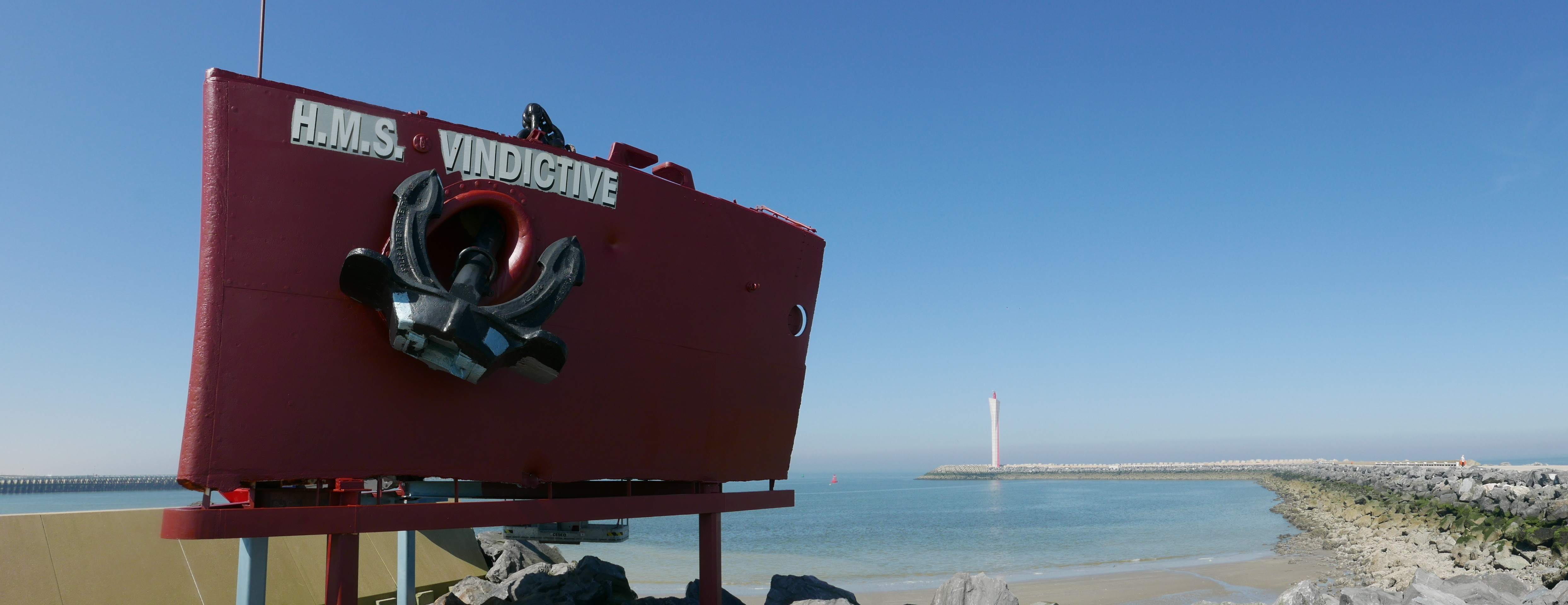 The present-day harbour at Ostend, with the bow of HMS Vindictive preserved as a memorial. Used to storm the Mole, or harbour wall at Zeebrugge, the cruiser was later sunk as a blockship at Ostend in May 1918 (Photo: Centenary News)
The present-day harbour at Ostend, with the bow of HMS Vindictive preserved as a memorial. Used to storm the Mole, or harbour wall at Zeebrugge, the cruiser was later sunk as a blockship at Ostend in May 1918 (Photo: Centenary News)
Amid the continuing Great War commemorations in Belgium, Mr Decaluwé notes: “What always strikes me in the overview of all these initiatives in our country, is that little or no attention is paid to the war events at sea. Despite that, the war at sea was of crucial strategic importance for the Western Front.”
“What few people know is that our Belgian seaports, Ostend and Zeebrugge, played an important role during the First World War.
“The German Army had converted our North Sea coast into one large fortified zone. For the first time in warfare, submarines became an imposing weapon.”
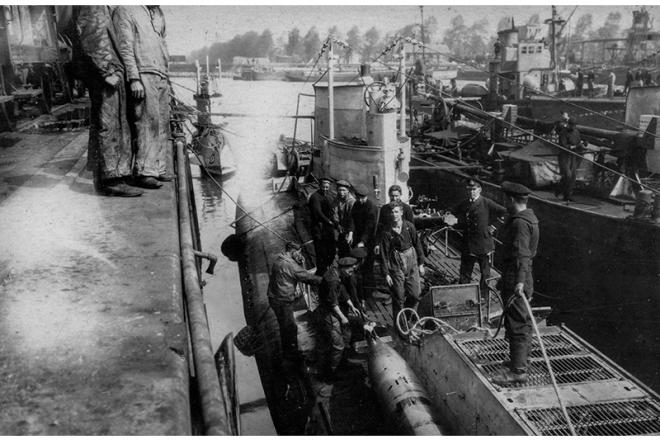
A U-boat being supplied in Bruges docks, 1916. (Photo © Tomas Termote)
The U-boats of the Flanders Flotilla were based inland at Bruges, passing through canals and sea locks to reach the open sea at nearby Zeebrugge and Ostend. British forces did succeed in sinking three blockships in the canal mouth at Zeebrugge during the St George’s Day Raid of 23 April 1918, but failed to obstruct it entirely.
“As the U-boat was the only weapon which nearly forced Great Britain to the brink of surrender, the Royal Navy brought everything in its arsenal to destroy this threat,” exhibition curator Tomas Termote explains.
Entering the neo-gothic splendours of the Provincial Court – the exhibition venue in the heart of picturesque Bruges – it’s hard to imagine that 100 years ago, this was the nerve centre for such a life-or-death campaign.
But once inside, the subdued lighting of the galleries submerges you in the events of 1914-18. The main hall is dominated by an artistic impression of a typical Flanders U-boat, while a full-scale diagram of the layout stretching the length of the floor reveals just how small, and cramped, some of these craft were.
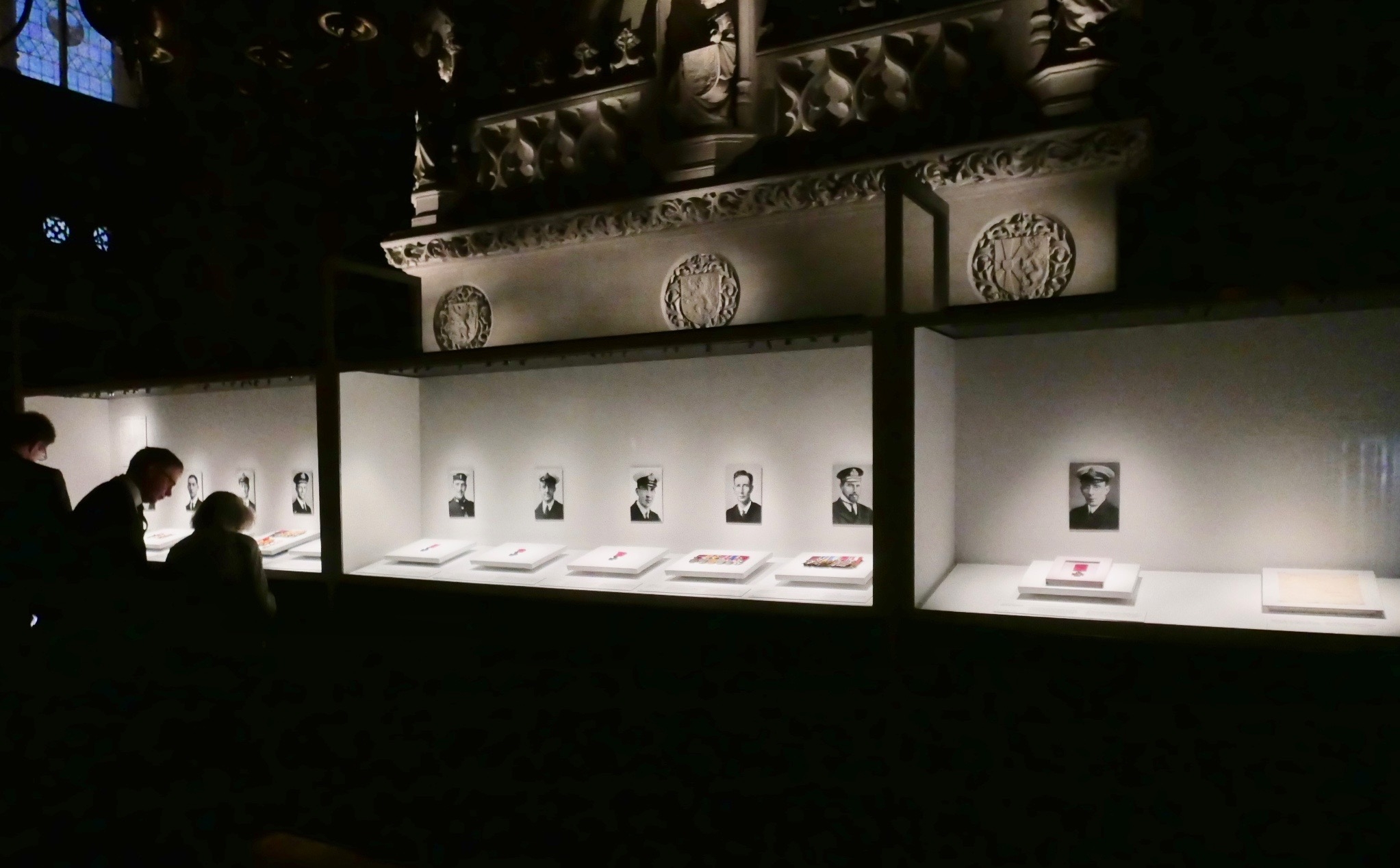 The 11 Victoria Crosses (above) – Britain’s highest military decoration for bravery – are presented in a side room that inspires a reverential hush. Eight were awarded for the St George’s Day Raid on Zeebrugge, and three more for a second attack on Ostend on 9 May 1918 – the greatest single number for a naval action.
The 11 Victoria Crosses (above) – Britain’s highest military decoration for bravery – are presented in a side room that inspires a reverential hush. Eight were awarded for the St George’s Day Raid on Zeebrugge, and three more for a second attack on Ostend on 9 May 1918 – the greatest single number for a naval action.
Whatever the outcome of the raids themselves, they delivered a morale boost to a war weary nation, and the award of all the medals by King George V in a special ceremony at Buckingham Palace that July was filmed for a wider audience, as an accompanying exhibition video shows.
Respite
For German U-boat crews, the delights of Bruges provided a respite from the threat of imminent death at sea. In a striking contrast to the display of Victoria Crosses, another room is papered with garish caricatures giving a flavour of the ‘Kasino’, the canteen where the submariners relaxed. Even so, there was black humour attached to cartoon slogans on these walls. ‘Man lebt ja wohl so kurze zeit’ – life is probably short’.
As Tomas Termote puts it: “The artefacts and documents will not only give a glimpse into the technology and types of U-boats but also an idea of the human beings behind these machines.”
The exhibition’s even-handed approach to the Battle for the North Sea was reflected at the opening by the presence of descendants of some of the leading First World War protagonists: Nick Jellicoe, grandson of Britain’s First Sea Lord, Admiral Sir John Jellicoe; Reinhard Scheer-Hennings, great grandson of Admiral Reinhard Scheer, Commander-in-Chief of the German High Seas Fleet; and Randolph Churchill, great grandson of Winston Churchill, who as First Lord of Admiralty, deployed the Royal Navy at the start of the war.
Message
For Nick Jellicoe, the commemorations carry an important message for the present: “I think it’s paramount in this age of extremist ideological rhetoric, so-called fake news, to preserve, understand and to pass on these lessons from our history to the next generation – and to do so together,” he said.
“We should not be be doing this from a national perspective. We should be learning from each other’s interpretations and understanding why there are differences in perceptions….so that hopefully we don’t commit these monumental errors in the future.”
This informative and absorbing exhibition does indeed shed light on both the British and German experiences of the war at sea in WW1.
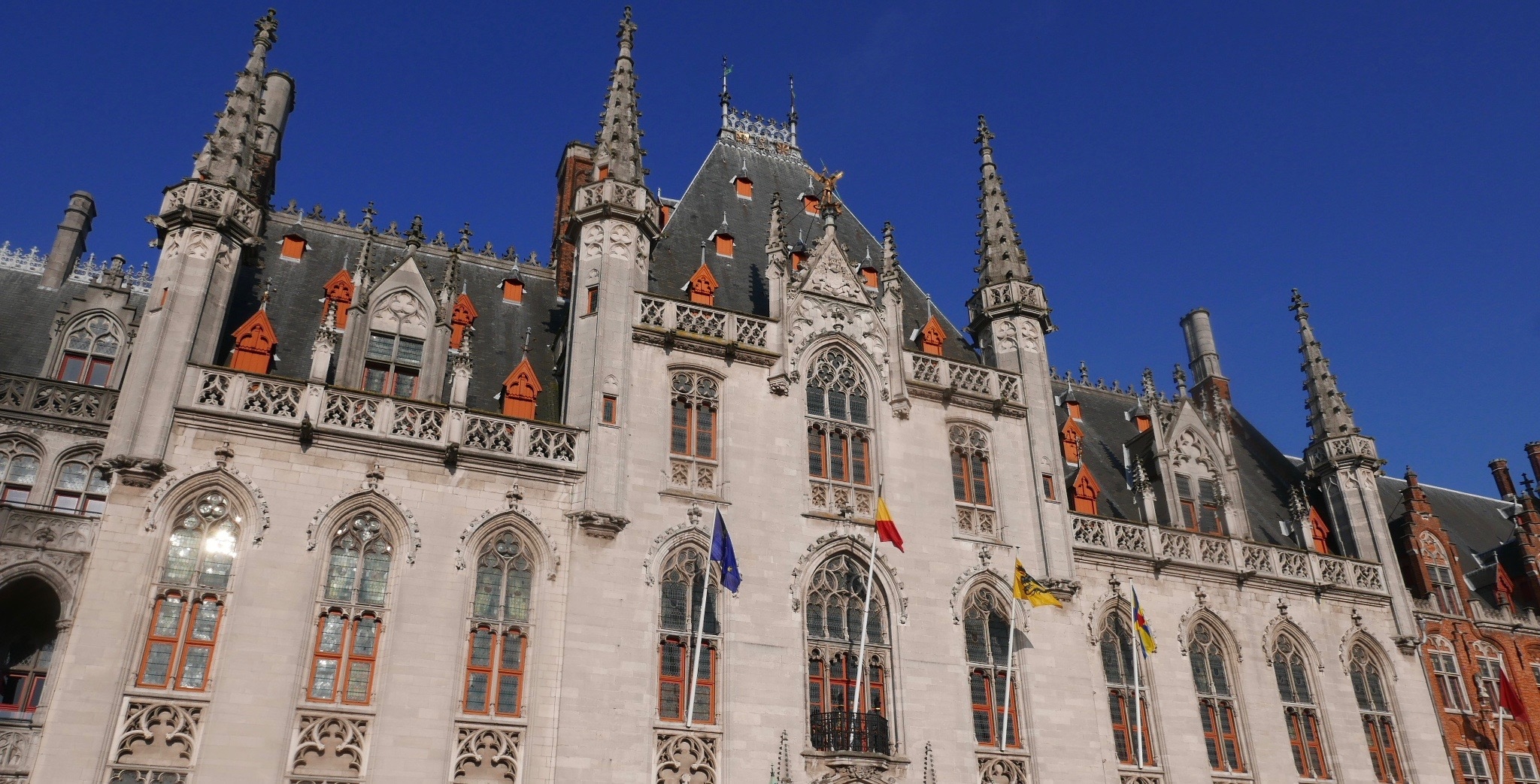 1914 ’18 The Battle for the North Sea is at the Provinciaal Hof (Provincial Court House), Markt 3, Bruges from April 21-August 31.
1914 ’18 The Battle for the North Sea is at the Provinciaal Hof (Provincial Court House), Markt 3, Bruges from April 21-August 31.
See also in Centenary News:
George Nicholson Bradford VC honoured with new memorial in Blankenberge.
Zeebrugge remembers fallen of 1918 naval raids.
Tomas Termote is author of ‘War Beneath the Waves: U-boat Flottilla Flandern 1915-18’. Read our review here.
Images courtesy of Tomas Termote (U-boat engineers, Bruges docks); Centenary News (exhibition gallery, VC panel)
Posted by CN Editor, reporting from Bruges
